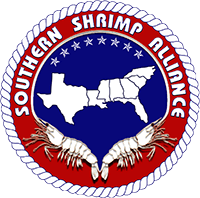Yesterday, the U.S. Food and Drug Administration (FDA) reported refusing a total of just 55 seafood entry lines in June. This represents, by a significant margin, the lowest monthly total of seafood entry line refusals for any month going back to October 2001, the first month for which data are reported on the FDA’s website. Because the last seafood entry line refusal reported for the month was June 27th, it is possible that this total will be subsequently increased by any additional entry line refusals that took place on June 28th, 29th, and 30th. However, any upward revision is likely to be limited and is unlikely to change the fact that June 2019 represented an extremely aberrational month in terms of the FDA’s regulation of imported seafood.
Nevertheless, the FDA reported that 3 out of the 55 (5.5%) total seafood entry line refusals were of shrimp for reasons related to banned antibiotics.
Through the first half of the year, the FDA has refused a total of 47 entry lines of shrimp for reasons related to veterinary drug residues, compared to 53 all of last year (and 55 in all of 2017). As summarized in the table below, the number of shrimp entry line refusals this year exceeds the annual refusals by the FDA reported between 2002 and 2006:

- Freshly Frozen Foods (United Arab Emirates), a company that has been listed on Import Alert 16-129 (“Detention Without Physical Examination of Seafood Products Due to Nitrofurans”) since June 27, 2018 for nitrofurans in its cooked shrimp shipments (with a separate listing for Freshly Frozen Foods Factory LLC), had two entry lines refused for shrimp contaminated with nitrofurans by the Division of Southwest Imports on June 24, 2019; and
- Agropecuaria Camaronera El Majagual C.A. (Venezuela), a company that is not currently listed on Import Alert 16-124 (“Detention Without Physical Examination of Aquaculture Seafood Products Due to Unapproved Drugs”), Import Alert 16-127 (“Detention Without Physical Examination of Crustaceans Due to Chloramphenicol”), or Import Alert 16-129 (“Detention Without Physical Examination of Seafood Products Due to Nitrofurans”), had one entry line refused for shrimp contaminated with nitrofurans by the Division of Southeast Imports on June 24, 2019.
